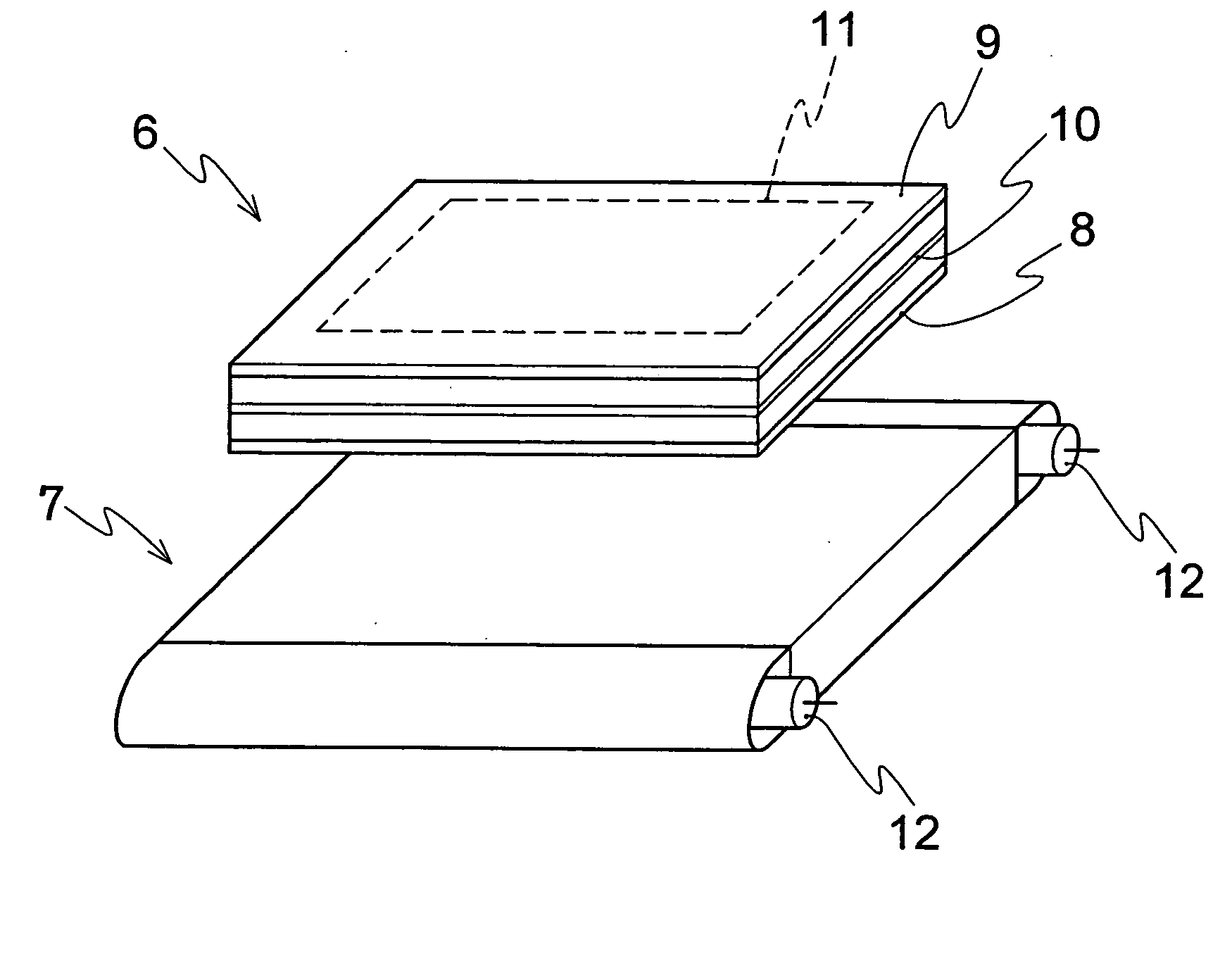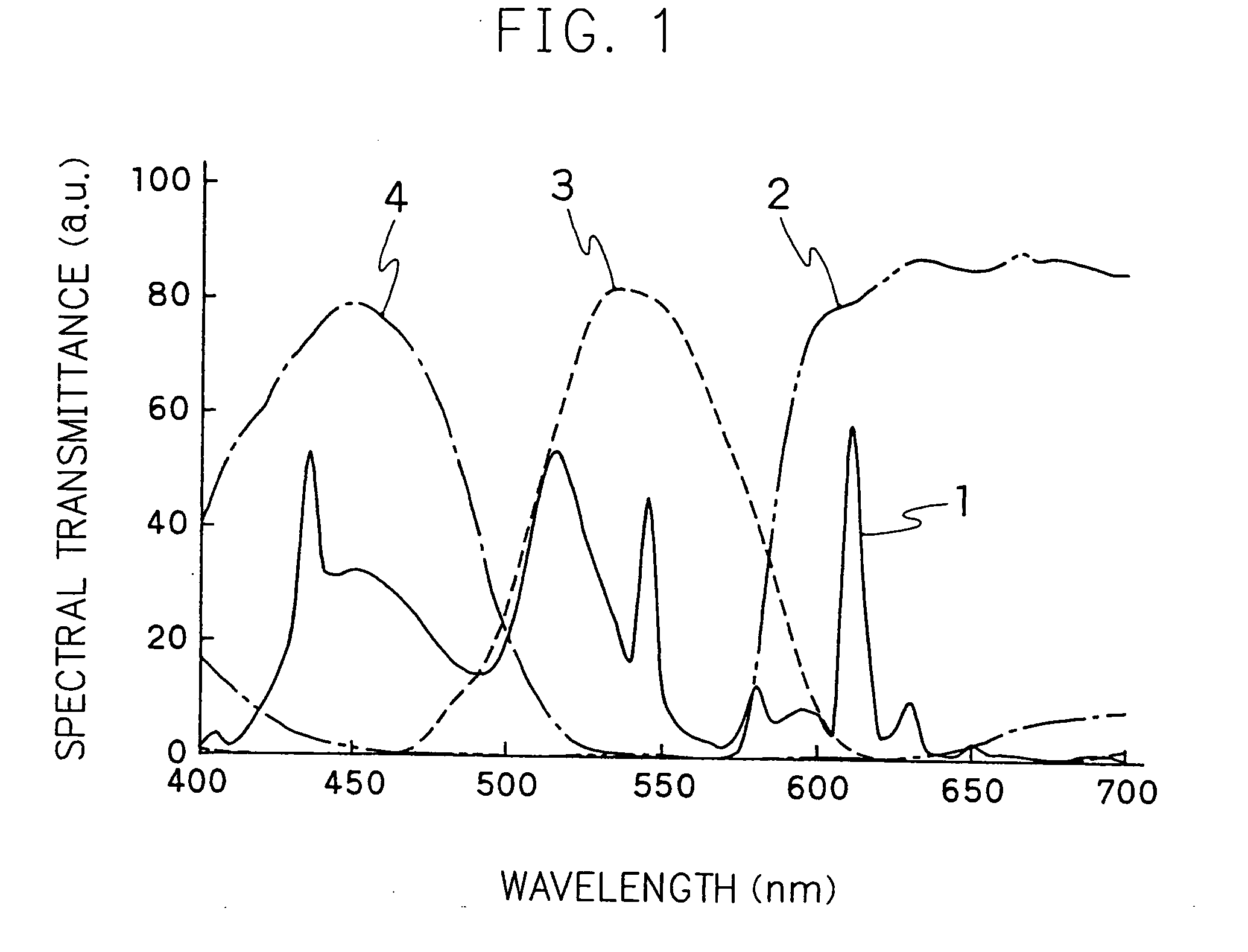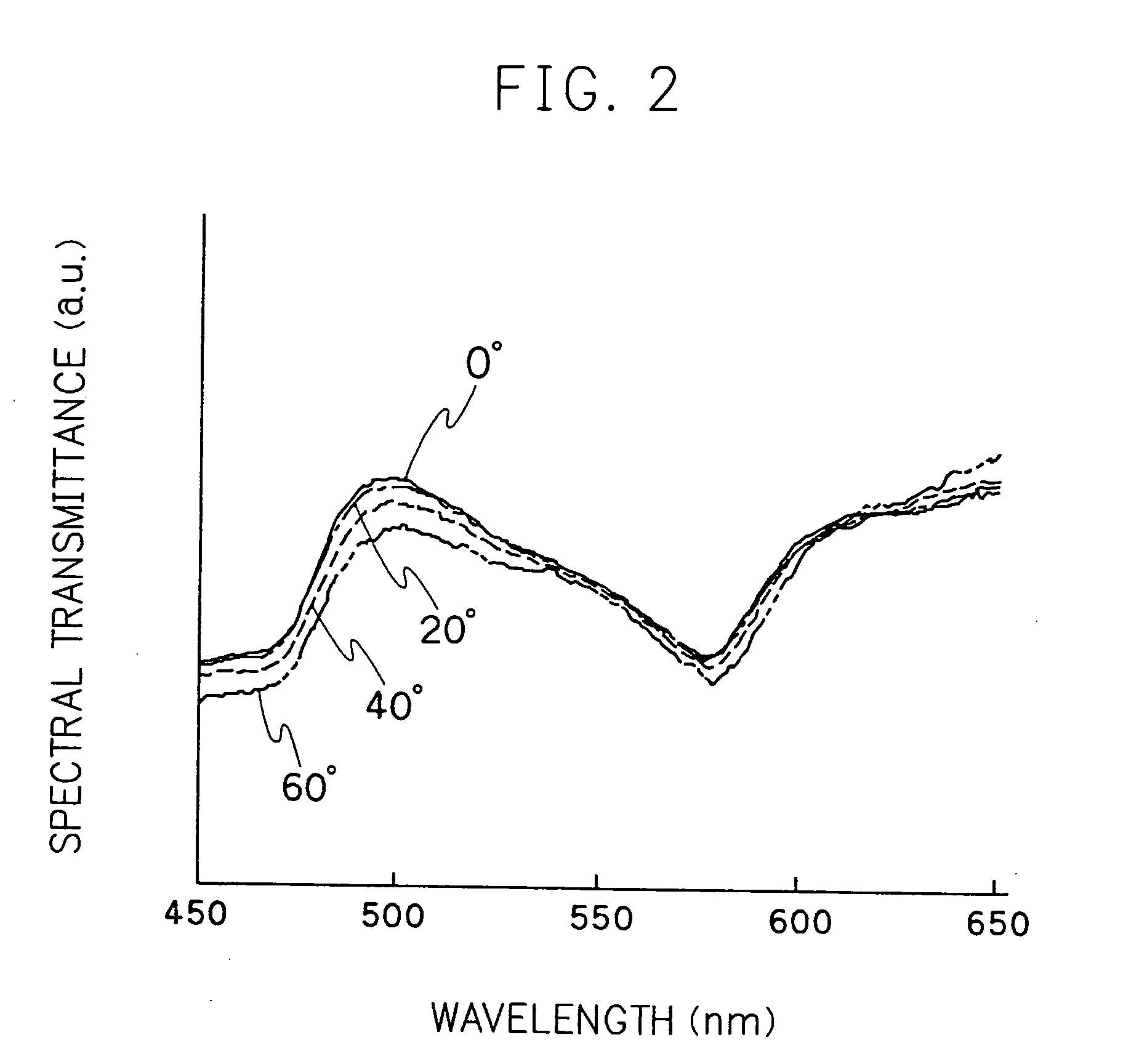Liquid crystal display
a liquid crystal display and liquid crystal technology, applied in non-linear optics, instruments, optics, etc., can solve the problems of liquid crystal display having a problem in a change of chromaticity and luminance, and insufficient to display a genuine green imag
- Summary
- Abstract
- Description
- Claims
- Application Information
AI Technical Summary
Benefits of technology
Problems solved by technology
Method used
Image
Examples
embodiment 1
[0033]FIG. 1 shows the characteristic of the light emitting spectrum of a back light BL1 and the characteristic of the transmit spectrum 1 of a color filter CF1 in Embodiment 1. The characteristic of the transmit spectrum is composed of a transmit spectrum 2 of a red color filter, a transmit spectrum 3 of a green color filter and a transmit spectrum 4 of a blue color filter. In Embodiment 1, with respect to a light source for the back light, a cold cathode fluorescent light having a maximum intensity of the light emitting spectrum around 517 nm in a light emitting spectrum range of 500 nm to 550 nm in an area of a green component is employed. On the other hand, a maximum transmission rate of the transmit spectrum of the green color filter 3 is placed around 535 nm, and a wavelength range having a transmission rate of larger than a half value is in a range of 508 nm to 585 nm. For a liquid crystal panel, a general TN-type liquid crystal having the characteristic of the transmit spect...
embodiment 2
[0038] The liquid crystal display as disclosed in Embodiment 2 is composed of the back light BL1 having the same characteristic of a spectrum and a color filter CF1 as shown in Embodiment 1 and the liquid crystal display panel having a dependent viewing angle of the transmit spectrum as shown in FIG. 2. The viewing angle in FIG. 2 is an angle expressed by a left and right polar angle, as a normal angle in the liquid crystal display is set as 0°. FIG. 3 is a standardized transmit spectrum from each angle of FIG. 2 by spectrum of front direction, and when the change of the viewing angle is between 0° and 60°, a relative change of the transmit spectrum is within 20% of difference. For the liquid crystal display having a transmit spectrum such as in FIGS. 2 and 3, there is employed an IPS mode in which through an electrode located under a substrate, the lateral electric field is applied, then liquid crystal molecules are rotated parallel to the substrate.
[0039] In Table 2, there is sho...
embodiment 3
[0041]FIG. 4 shows a characteristic of a light emitting spectrum 5 of the back light BL2 and a transmit spectrum of a color filter CF1 in Embodiment 3 of the present invention. The color filter CF1 is the same device employed in previous Embodiments 1 and 2, and the same TN-type liquid crystal display panel being employed in Embodiment 1 is employed as a liquid crystal display panel.
[0042] On the other hand, as a light source of the back light, a maximum intensity of the light emitting spectrum of 525 nm at a range of 500 nm to 550 nm of the light emitting spectrum in a green component is used. As the light source, for instance, there can be employed a green light emitting diode (LED) having the same kind of spectrum characteristic. Other than the green LED, white light, a mixture of three light colors of a red LED, blue LED and green LED, can be used. The number of LED is decided to obtain a desirable white chromaticity according to a characteristic of each LED.
[0043] In Table 3,...
PUM
| Property | Measurement | Unit |
|---|---|---|
| wavelength range | aaaaa | aaaaa |
| wavelength range | aaaaa | aaaaa |
| wavelength range | aaaaa | aaaaa |
Abstract
Description
Claims
Application Information
 Login to View More
Login to View More - R&D
- Intellectual Property
- Life Sciences
- Materials
- Tech Scout
- Unparalleled Data Quality
- Higher Quality Content
- 60% Fewer Hallucinations
Browse by: Latest US Patents, China's latest patents, Technical Efficacy Thesaurus, Application Domain, Technology Topic, Popular Technical Reports.
© 2025 PatSnap. All rights reserved.Legal|Privacy policy|Modern Slavery Act Transparency Statement|Sitemap|About US| Contact US: help@patsnap.com



